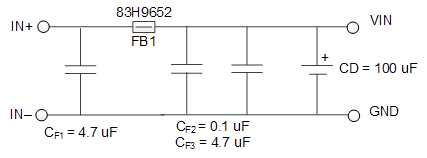JAJSFY3D August 2018 – August 2022 LMR36006-Q1
PRODUCTION DATA
- 1 特長
- 2 アプリケーション
- 3 概要
- 4 Revision History
- 5 Device Comparison Table
- 6 Pin Configuration and Functions
- 7 Specifications
- 8 Detailed Description
-
9 Application and Implementation
- 9.1 Application Information
- 9.2
Typical Application
- 9.2.1
Design 1: Low Power 24-V, 600-mA PFM Converter
- 9.2.1.1 Design Requirements
- 9.2.1.2
Detailed Design Procedure
- 9.2.1.2.1 Custom Design With WEBENCH Tools
- 9.2.1.2.2 Choosing the Switching Frequency
- 9.2.1.2.3 Setting the Output Voltage
- 9.2.1.2.4 Inductor Selection
- 9.2.1.2.5 Output Capacitor Selection
- 9.2.1.2.6 Input Capacitor Selection
- 9.2.1.2.7 CBOOT
- 9.2.1.2.8 VCC
- 9.2.1.2.9 CFF Selection
- 9.2.1.2.10 Maximum Ambient Temperature
- 9.2.1.3 Application Curves
- 9.2.2 Design 2: High Density 12-V , 600-mA FPWM Converter
- 9.2.1
Design 1: Low Power 24-V, 600-mA PFM Converter
- 9.3 What to Do and What Not to Do
- 10Power Supply Recommendations
- 11Layout
- 12Device and Documentation Support
- 13Mechanical, Packaging, and Orderable Information
パッケージ・オプション
メカニカル・データ(パッケージ|ピン)
- RNX|12
サーマルパッド・メカニカル・データ
- RNX|12
発注情報
9.2.1.3 Application Curves
Unless otherwise specified the following conditions apply: VIN = 24 V, TA = 25°C. The circuit is shown in Figure 9-1, with the appropriate BOM from Table 9-3.
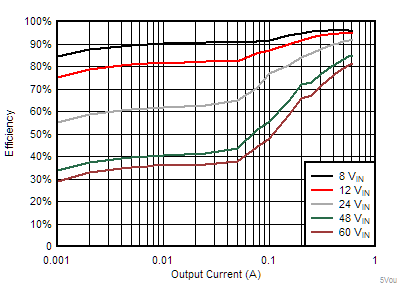
| VOUT = 5 V | 400 kHz |
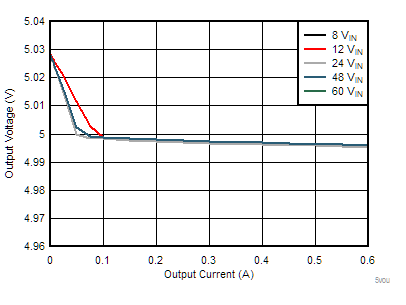
| VOUT = 5 V | 400 kHz |
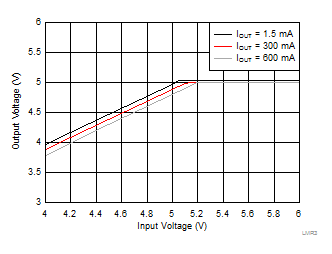
| VOUT = 5 V | 400 kHz |
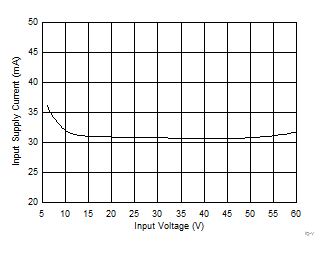
| VOUT = 3.3 V | IOUT= 0 A | RFBT= 100 kΩ |
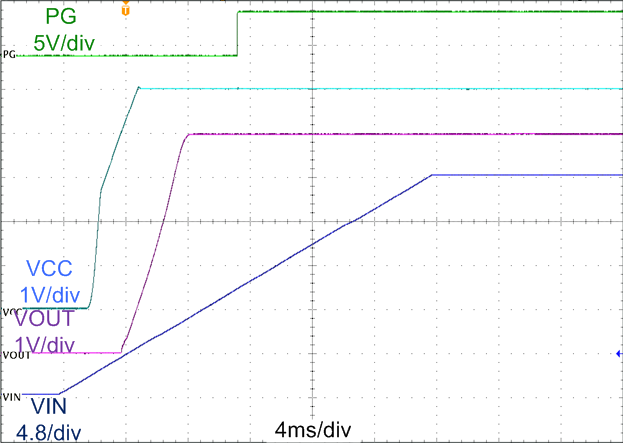
| VOUT = 5 V | 400 kHz |
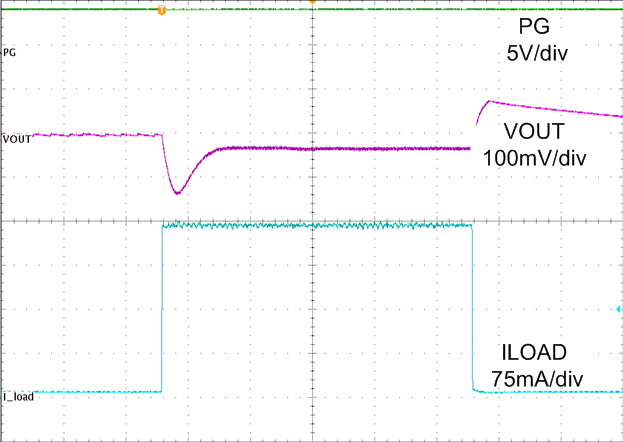
| VOUT = 5 V | 400 kHz | ILOAD= 0 A - 0.3 A |
| Slew Rate=1µs/A | ||
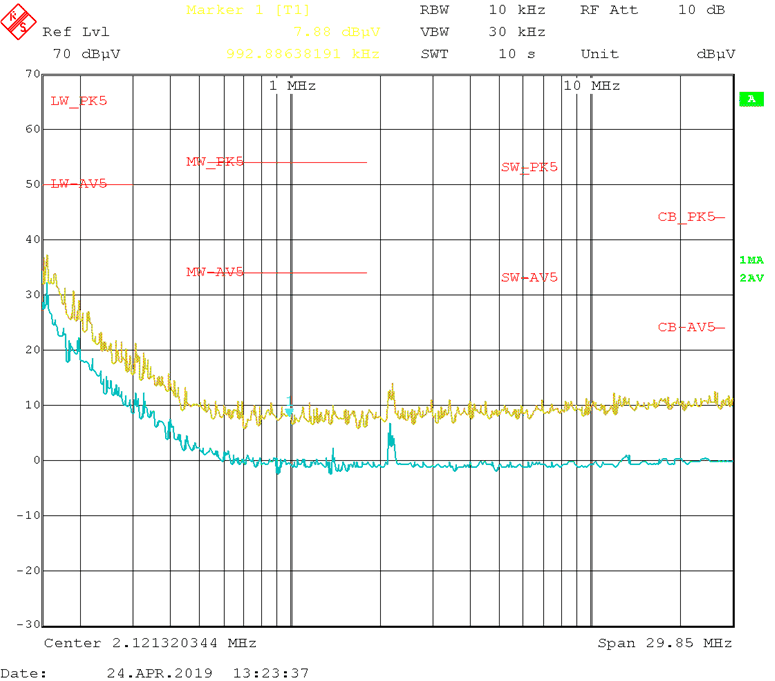
| VIN = 13.5 V | VOUT = 5 V | IOUT = 1.5 A |
| Frequency Tested: 150kHz to 30 MHz | ||
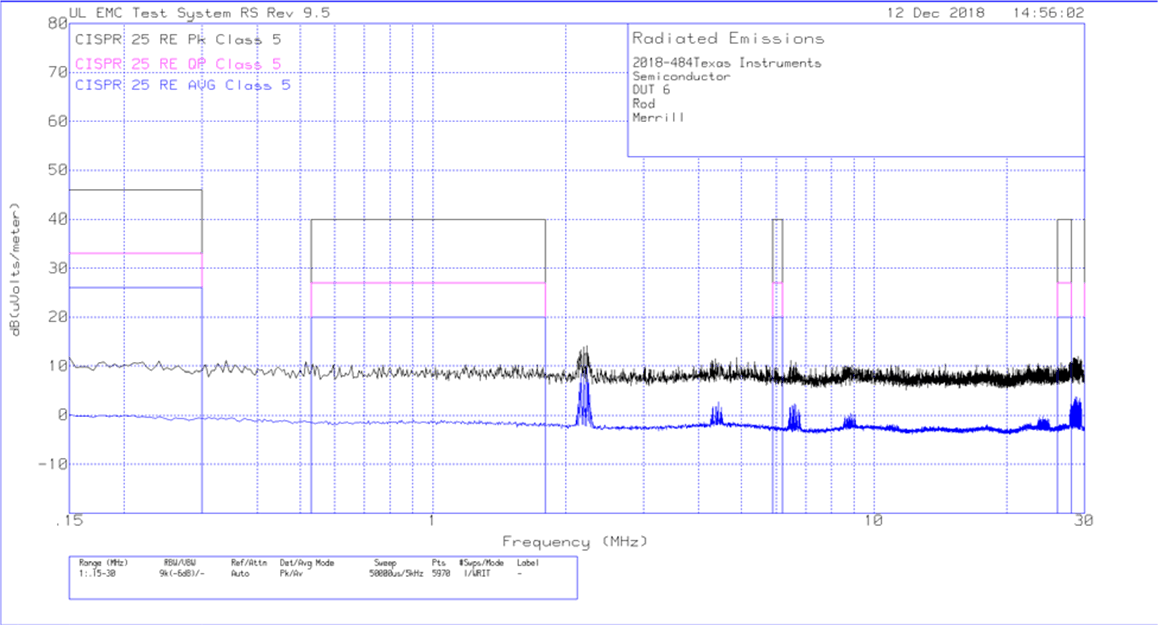
| VIN = 13.5 V | VOUT = 5 V | IOUT = 1.5 A |
| Frequency Tested: 150 kHz to 30 MHz | ||
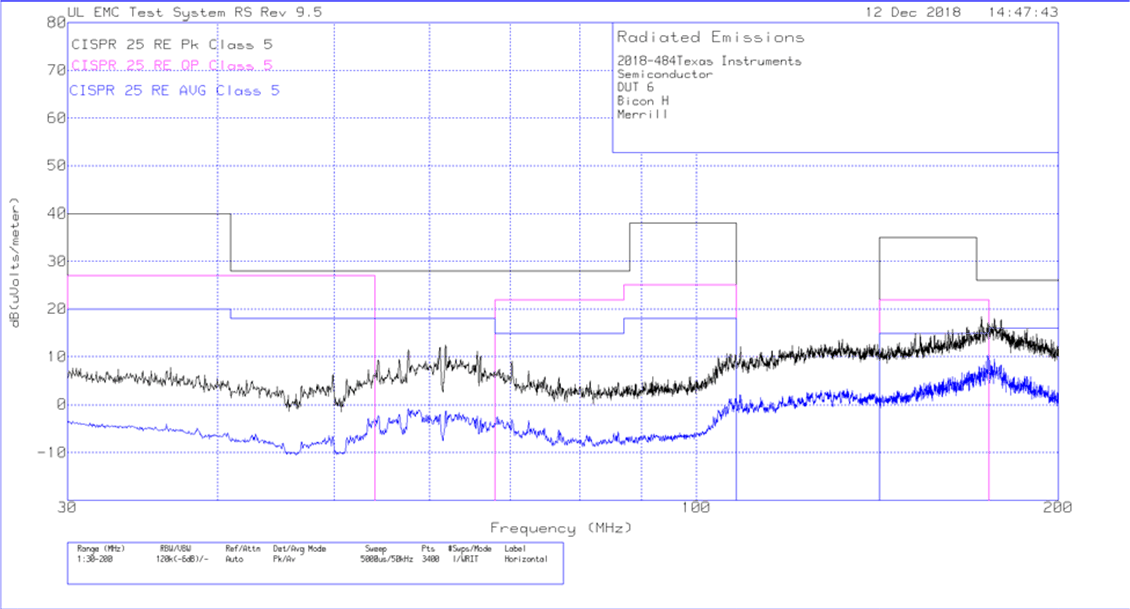
| VIN = 13.5 V | VOUT = 5 V | IOUT = 1.5 A |
| Frequency Tested: 30 MHz to 200 MHz | ||
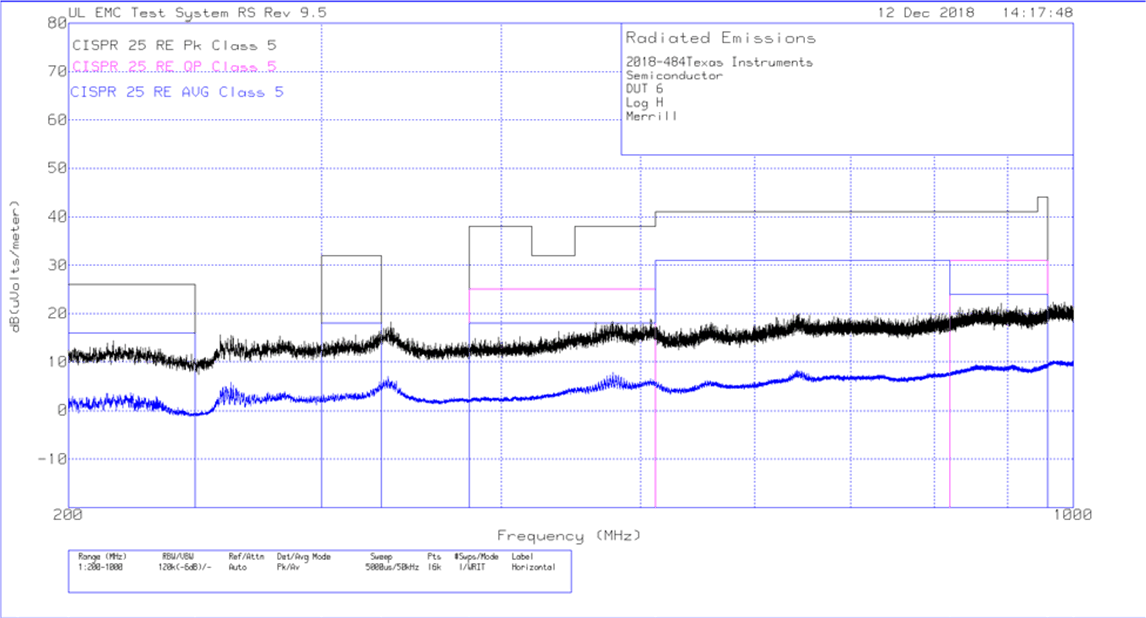
| VIN = 13.5 V | VOUT = 5 V | IOUT = 1.5 A |
| Frequency Tested: 200 MHz to 1 GHz | ||
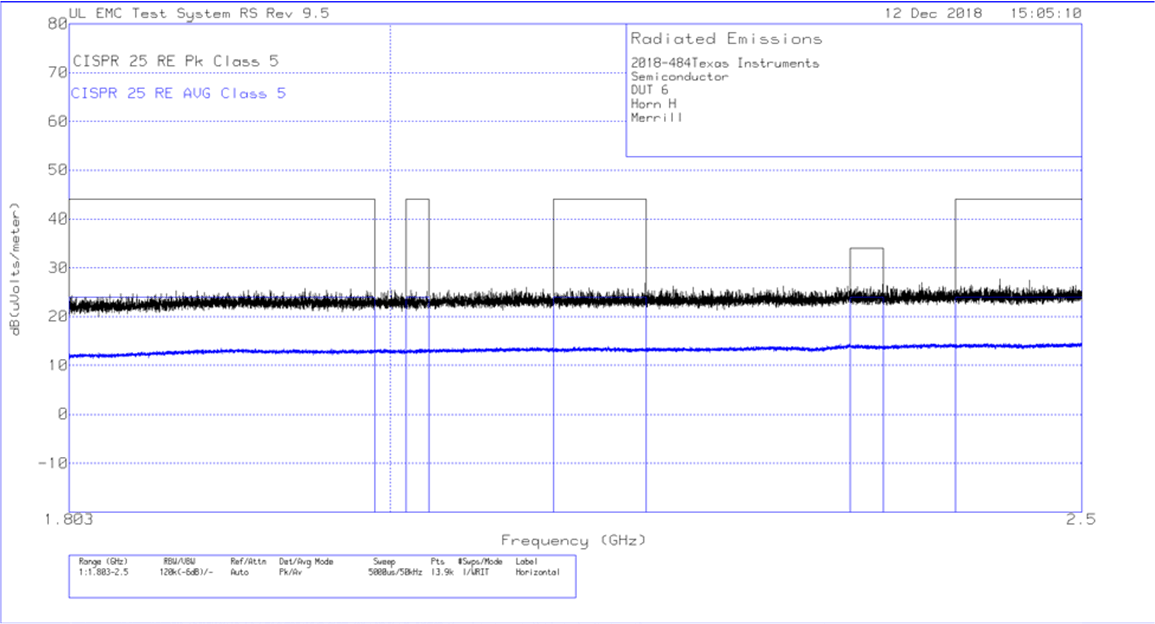
| VIN = 13.5 V | VOUT = 5 V | IOUT = 1.5 A |
| Frequency Tested: 1.8 GHz to 2.5 GHz | ||
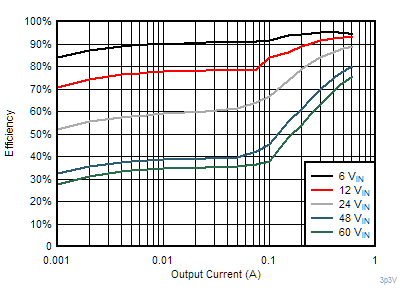
| VOUT = 3.3 V | 400 kHz |
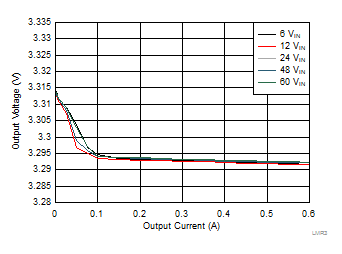
| VOUT = 3.3 V | 400 kHz |
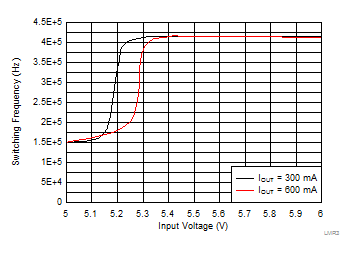
| VOUT = 5 V | 400 kHz |
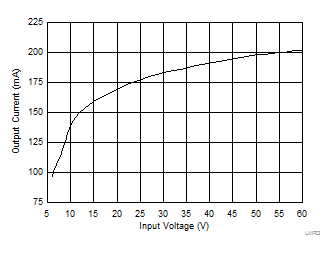
| VOUT = 3.3 V | 400 kHz |
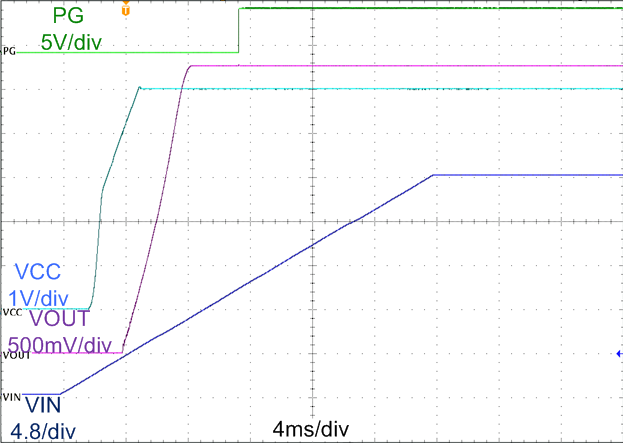
| VOUT = 5 V | 400 kHz |
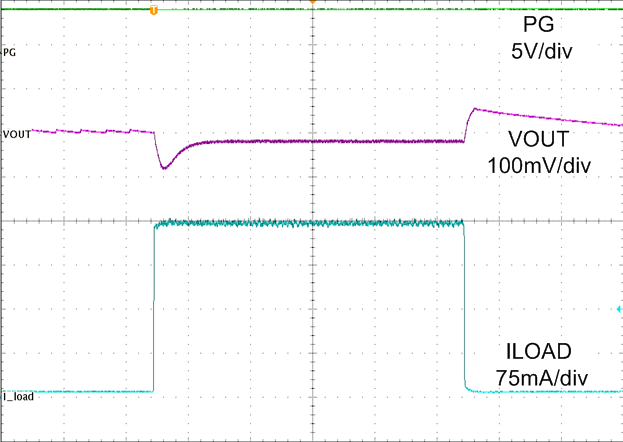
| VOUT = 3.3 V | 400 kHz | ILOAD= 0 A - 0.3 A | |
| Slew Rate = 1 µs/A | |||
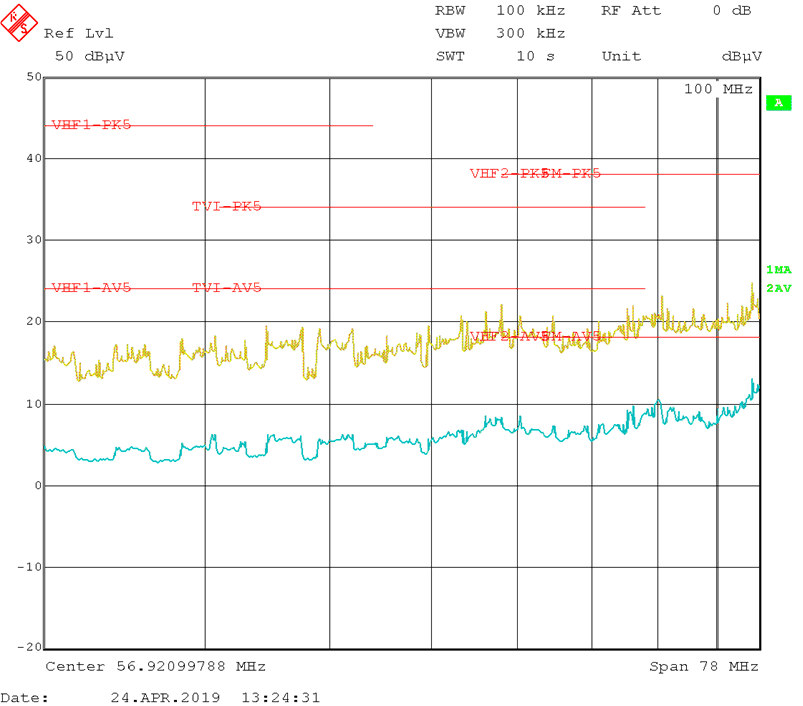
| VIN = 13.5 V | VOUT = 5 V | IOUT = 1.5 A |
| Frequency Tested: 30 MHz to 108 MHz | ||
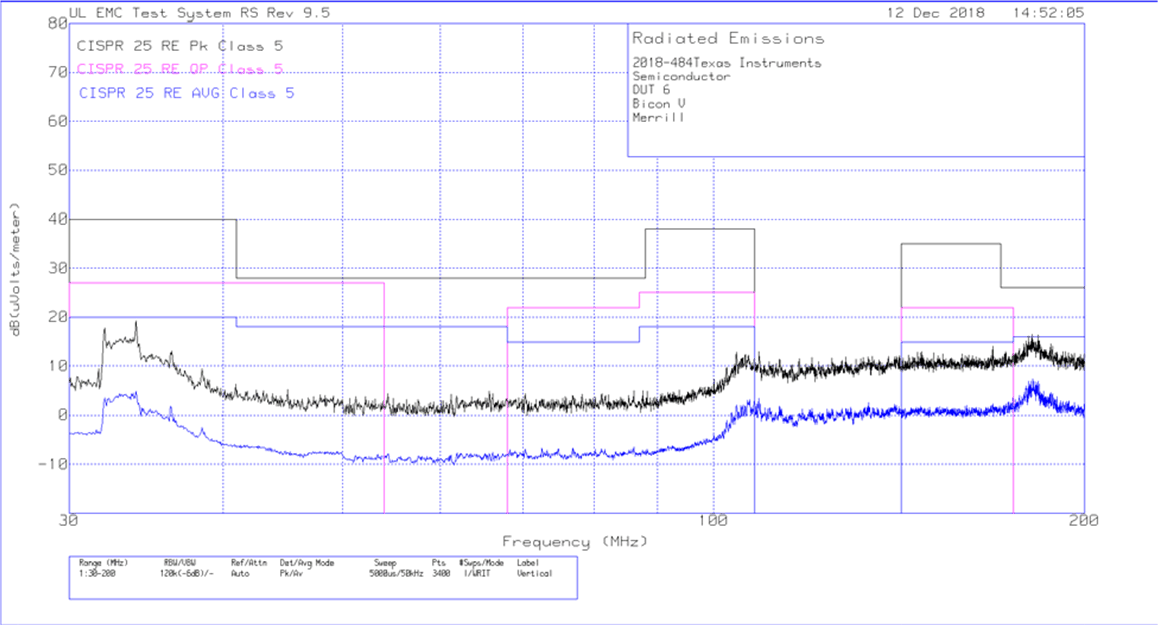
| VIN = 13.5 V | VOUT = 5 V | IOUT = 1.5 A |
| Frequency Tested: 30 MHz to 200 MHz | ||
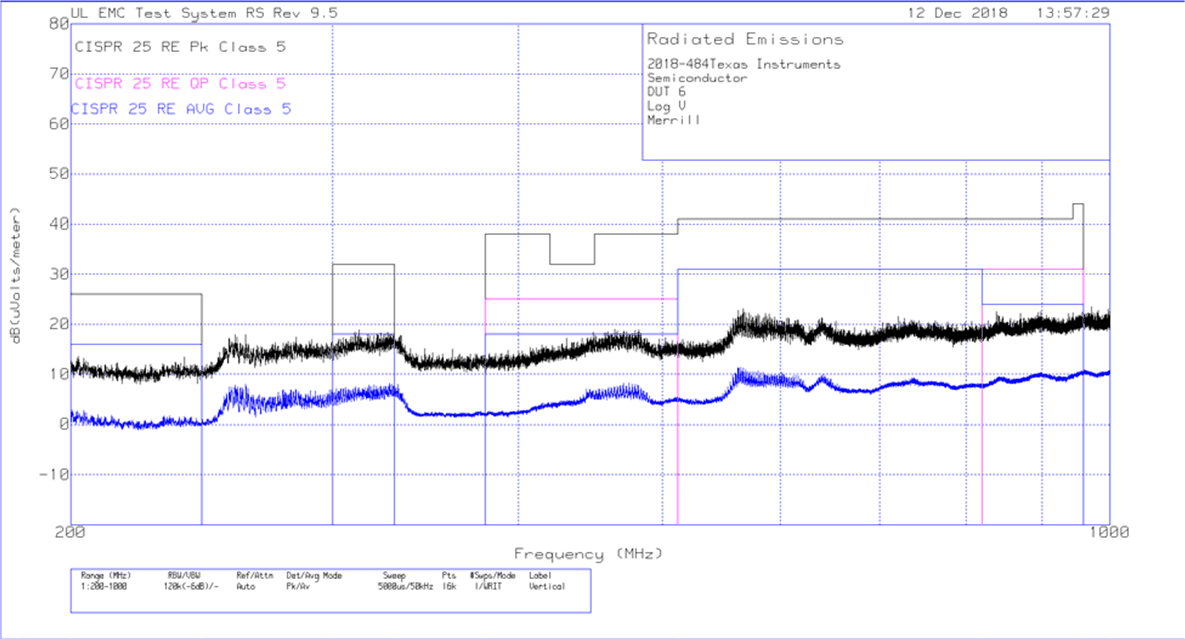
| VIN = 13.5 V | VOUT = 5 V | IOUT = 1.5 A |
| Frequency Tested: 200 MHz to 1 GHz | ||
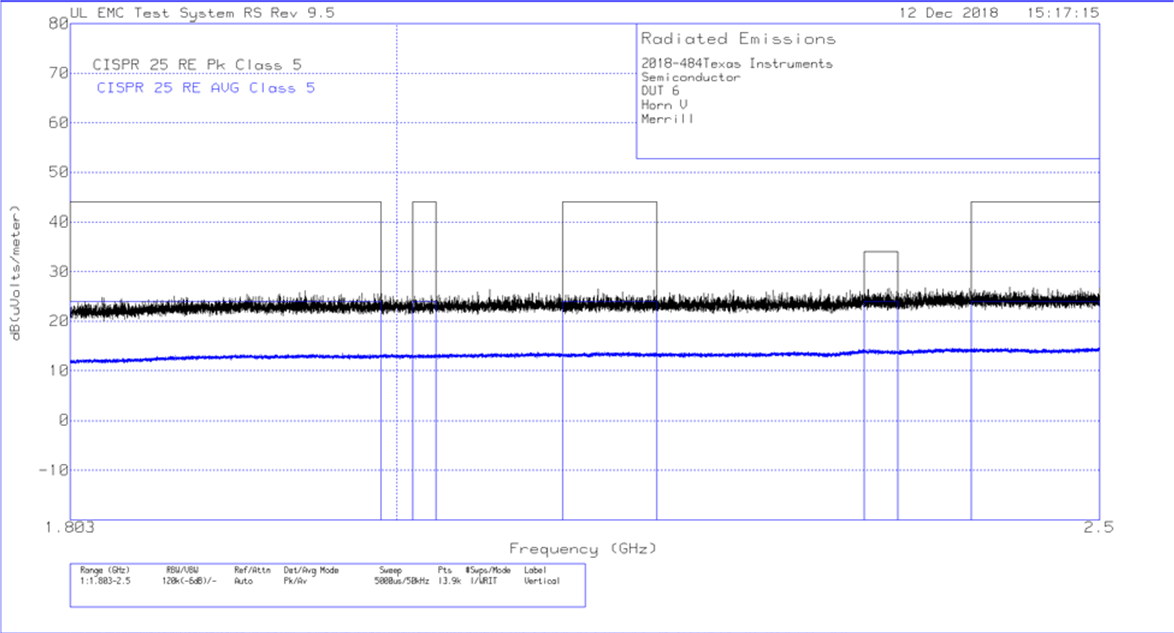
| VIN = 13.5 V | VOUT = 5 V | IOUT = 1.5 A |
| Frequency Tested: 1.83 GHz to 2.5 GHz | ||
